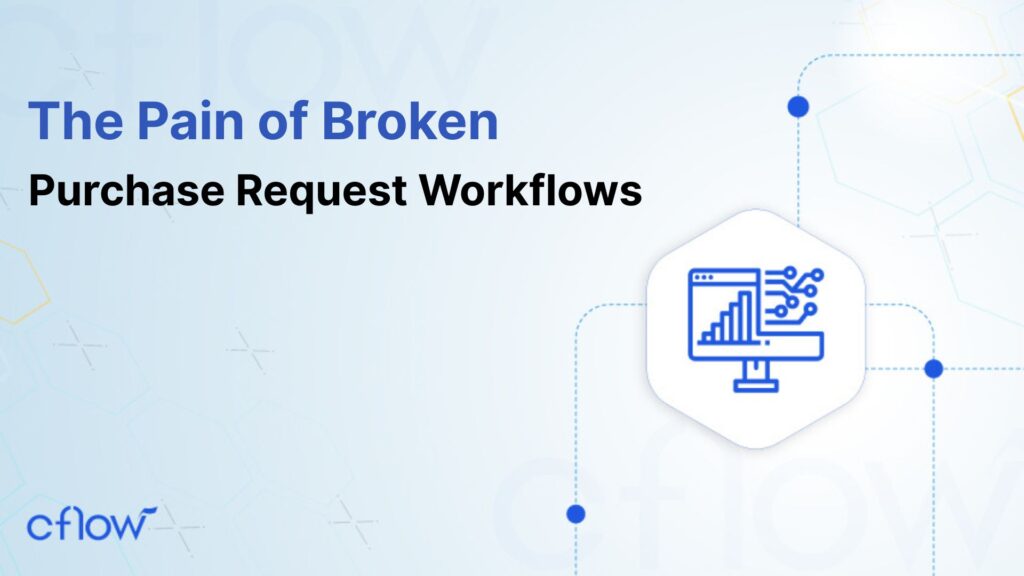When Automation Backfires: The Pain of Broken Purchase Request Workflows

r/WorkplaceAutomation
Go to Workplace Automation
r/WorkplaceAutomation • 30.08.2025
StuckApprovals99
Purchase requests take longer after automation 😫
Help
We recently rolled out a new automation tool for streamlining the purchase requests process earlier this year. The tool promised to:
- Clear out messy email threads
- Accelerate approvals
- Simplify request tracking
Honestly, it sounded like a dream. But six months down the lane? It’s a nightmare.
Here’s what’s happening:
- Bloated forms: Each request form has 15–20 mandatory fields, most of which aren’t even relevant. Get this – why would stationery need a “vendor tax compliance code”?
- Wrong routing: Requests are frequently routed to the wrong approver. Sometimes my manager, sometimes someone three departments away.
- Zero prioritization: An urgent hardware purchase request sits in the same queue as a $20 office supply. Lack of prioritization delays urgent requirements!
- Vendor frustration: By the time approvals crawl through the system, vendors are already calling, asking why payments are late.
I thought automation was supposed to save time. Instead, we’ve digitized chaos. I’m starting to think our old spreadsheets were faster.
Table of Contents
Comments
OpsGuy88 • 3d ago
One of the outcomes when leadership considers “automation” as the via media to process excellence is failed implementation. They buy a tool, slap your process into it without redesign. The result? You’re stuck with a rigid, digital bottleneck.
The lesson learnt – automation without process mapping is a recipe for chaos at scale.
FinancePro42 • 3d ago
This sounds just like the issue we faced. Our purchase request approval workflow required three levels of approval for every single purchase request. A request for a $40 printer cartridge went through all three review levels, as did a $1000 request for a new laptop. Approvers got tired of constant notifications and just stopped responding.
Result? We spent more time chasing approvals manually. This is not just a failure of automation, but a scenario where the required effort is multiplied.
ProcessNinja • 2d ago
This is the uncomfortable truth of automation: bad automation is worse than no automation.
Think about it:
- Agreed, paper-based processes are slow, but at least flexible.
- Badly automated processes are slow, rigid, and ridden with bottlenecks.
When the rules are coded wrong, everyone is forced to live with the mistakes. Ideally, the workflow automation tool must facilitate easy rule changes (thresholds, routing, escalation), without which you’re stuck serving the system instead of the system serving you.
HRthrowaway_12 • 2d ago
Similar to the debacle with finance automation, our HR “onboarding automation” landed us in a mess. The automation workflow we rolled out for the onboarding process resulted in duplication of emails, assignment to the wrong individuals, and completely confused new employees. Such automation failures mainly stem from companies investing in these tools just to look modern, rather than buying tools that solve problems.
TechRealist • 2d ago
I would like to highlight the “human side” of automation. Aside from the technical aspects of automation implementation, the lack of buy-in from the team can also contribute to failed implementation.
A team that is not sold on the idea of automation tends to find workarounds, including side emails, WhatsApp pings, and hallway conversations. That undermines the whole point of automation.
Workflow tools should adapt to people, too. More often than not, companies force people to adapt to clunky workflows.
ProcurementGuy • 2d ago
The irony of automation – when you calculate the hours lost chasing approvals, the “efficiency savings” vanish. In our org, bad purchase automation easily wasted 10–15 hours per employee per month. When this calculation is applied across departments, the wasted hours pile up.
Automation has to be ROI-positive. Otherwise, it’s just expensive admin theater.
ToolTester88 • 1d ago
I beg to differ here; not all tools are the same. There are some intuitive tools (like Cflow) that actually let you set business rules:
- Auto-approve requests under a threshold (say $500).
- Route based on department & budget head.
- Escalate if nothing happens in 48 hrs.
If your system doesn’t do this, you’re stuck with rigid bureaucracy disguised as “automation.”
OverworkedAndTired (OP) • 1d ago
Exactly this. Right now, every request feels like pushing a rock uphill. Now, I spend more time managing the system than doing actual work.
Honestly, if leadership could see how many hours are wasted, they’d scrap this tool tomorrow.
Extended Discussion
The discussion thread brings us face-to-face with a bigger reality – automation is only as good as its design. Even a seemingly simple automation of the purchase request process may actually involve detailed and custom automation. Here’s what goes wrong most often:
Over-engineered forms – Instead of simplifying, companies add every possible field to the form. Employees get stuck filling out data that no one uses.
Rigid approval chains – A single $50 request shouldn’t require approval from the VP. Without conditional logic, every request takes the maximum possible time.
No exception handling – Real life is messy – vendors change, emergencies happen. Systems without flexibility collapse under edge cases.
Notification overload – When your Inbox is spammed with notifications, the likelihood of important emails slipping through the cracks is high. The result? Missed deadlines and ignored alerts.
Lack of visibility – Employees can’t track where their request is stuck. Transparency dies, and frustration multiplies.
The Human Impact
It’s easy to dismiss this as “just an IT problem.” But on the ground, bad purchase request automation directly affects employees:
- Morale drops: People feel powerless when tools slow them down.
- Stress rises: Urgent needs (like IT hardware) get delayed, leading to finger-pointing.
- Workarounds emerge: Employees bypass the system, creating compliance risks.
- Vendors lose trust: Late approvals mean late payments, which damage relationships.
Where the human element of workflow automation is missing, automation adds to the pain points rather than solving them. Instead, poor configuration multiplies them.
The Better Way
When designed well, purchase request workflows can actually be a game changer:
- Forms ask only the right questions.
- Rules allow auto-approval under thresholds.
- Routing sends requests to the right budget owner.
- Escalations kick in if things stall.
- Employees can see where their request is, in real time.
When all these boxes are ticked, automation works for people, not against them.
Final Takeaway
Bad automation doesn’t just waste time – it defeats the purpose of automation and erodes trust in technology itself. Employees end up working for the system instead of the system working for them.

Don’t let broken automation pull your team down. Build smart, AI-driven workflows that adapt to people – not the other way around.
What should you do next?
Thanks for reading till the end. Here are 3 ways we can help you automate your business:

Do better workflow automation with Cflow
Create workflows with multiple steps, parallel reviewals. auto approvals, public forms, etc. to save time and cost.

Talk to a workflow expert
Get a 30-min. free consultation with our Workflow expert to optimize your daily tasks.

Get smarter with our workflow resources
Explore our workflow automation blogs, ebooks, and other resources to master workflow automation.
Get Your Workflows Automated for Free!


